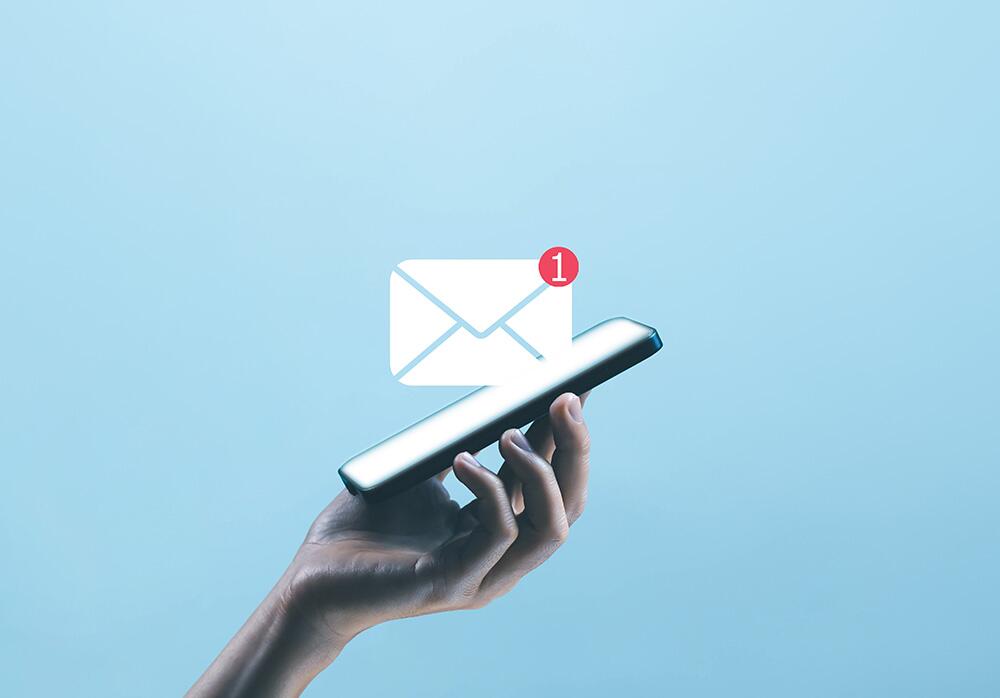
Summary: Email blasts can efficiently spread time-sensitive messages to a wide audience, but only with a sound strategy to avoid penalties and maximize ROI. Here are the key takeaways for creating effective email blasts:
- Reputation Matters: Maintain a healthy email list to protect your sender reputation score.
- Language Matters: Avoid spam-triggering language, jargon, or broken code; be clear and concise.
- Test It First: Send test emails to catch errors before deploying to your audience.
- Consider Timing: Schedule emails to align with audience engagement patterns.
- Ask Permission: Ensure recipients have opted in to receive your emails for better engagement.
Does your small business have a time-sensitive message that needs to reach the largest possible audience? Do you need to get the word out on a limited budget? Whether you’re announcing a sale or launching a new product, an email blast is an efficient way to spread the news. It can even significantly boost your ROI.
With that said, email marketing is more than sending a flashy message to a list of subscribers. To avoid penalties, you must employ a sound strategy that keeps best practices in mind.
If you break the rules with blast emails, you can end up blacklisted. Suddenly, your most cost-effective marketing channel will become a costly problem to be solved. One small mistake can make or break a small business.
In this guide, we’ll share the tips to keep in mind when developing an email blast strategy. Keep reading to learn what to do (and what to avoid) when emailing your entire list.
What Is an Email Blast?
Segmentation is a major component of a sound email marketing strategy.
In essence, dividing your audience into targeted segments ensures they only receive the communication they want to see. These targeted campaigns increase open rates and click-through rates. That leads to a higher level of engagement and, ultimately, more conversions.
You’ll often see a lower unsubscribe rate also. That’s because recipients won’t be overwhelmed with messages that don’t apply to them.
For example, imagine you want to get the word out about a new location in a city in California. You might segment your audience geographically. That way, customers in New York won’t see an email that doesn’t apply to them and will be less likely to unsubscribe.
If you segment your list, only your West Coast customers will receive the message. Most of them will be eager to learn about the new location and may even stop by. Thus, the thoughtful specificity provides a boost to ROI and keeps your overall list healthy.
In contrast, an email blast is a marketing email intended for the broadest possible audience. In most cases, you’ll send a blast email to everyone on your list. That can get a message out quickly and efficiently. For example, you might be announcing a product launch that applies to your entire customer base.
Blast emails are sometimes called “bulk emails” or “mass messages.” As a rule, they should be sent out in unique scenarios, not as an overall marketing strategy.

Email Blast Strategies
Below, we’re sharing our top tips for crafting an effective email blast. These tips are crucial when developing a sound, lucrative email blast strategy.
1. Reputation Matters
Did you know your business has an email sender reputation score? This value is determined by Email Service Providers (ESPs). Your score determines whether or not your marketing emails end up in recipients’ spam folders. The lower your score, the less likely recipients are to see them.
Sending an email blast incorrectly can potentially tank your reputation score. Thus, your most important, timely message may not reach your audience.
The following factors contribute to your reputation score:
- Engagement: How often your emails are opened and how many links are clicked.
- Spam Complaints: How many recipients mark your messages as spam.
- Unsubscribe rate: How many people unsubscribe from your list.
- Number of Emails Sent: How many emails you send on a regular basis.
- Bounce Rate: How many emails “bounce” or are not delivered due to poor list management.
Sending to a large list (potentially with a high bounce rate) is a red flag for ESPs. Thus, the best practice is to manage the health of your list by pruning it regularly. Do not purchase an email list, a practice that results in very high bounce rates. A large list only boosts ROI if your recipients want to receive and open your messages.
Furthermore, just because it’s an email blast doesn’t mean you need to send your message to your entire list all at once. Stagger send times and batch your emails to avoid red flags.
2. Language Matters
It can be tempting to use “marketing jargon” in your email subject line or messaging. However, ESPs also use this to determine whether or not an email is spam.
Likewise, using all caps, including broken code, and failing to include an unsubscribe link can trigger spam filters. The lower your reputation score, the more likely you are to end up in spam for these issues.
Best practices for targeted campaigns apply to email blasts, too. Be clear, concise, specific, and include a logical call to action.
3. Test It First
The only thing worse than sending out an email with an error is sending it to your entire list at once. Always send a test email before you deploy your email blast. It’s a great way to catch typos, mistakes, dead links, or other issues before it hits inboxes.
4. Consider Timing
When do you want your audience to see your big announcement? Should it be the first thing they see when they reach for their phone in the morning? Something they glance at on their lunch break? The first thing they see at the end of the work day?
Check your automation platform for a data-driven view of when your recipients tend to engage with your email. You can even use that to segment and stagger your blast. Ensure the message hits inboxes when your audience is ready and willing to read it.
5. Ask Permission
The most engaged email audience is an audience that wants to receive your emails. Consider giving subscribers the option to opt in or out of blast emails upon signup. A simple check box can save you a major headache in the aftermath.
Optimize Your Email Strategy with Small Business University
Crafting a sound email marketing strategy is about more than hitting “send.” You can learn more about best practices at our Small Business University. Browse our free online webinars and begin boosting your business from home.
